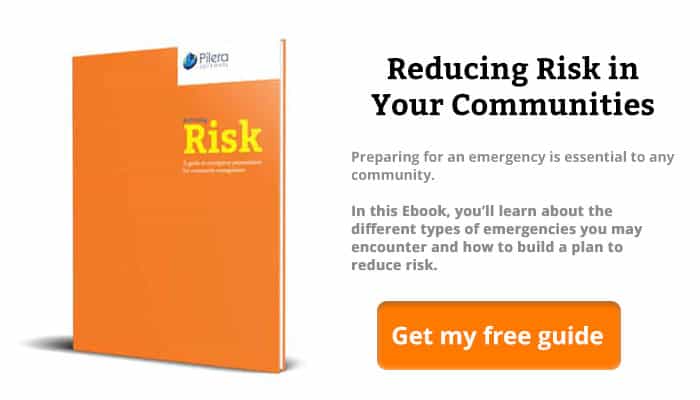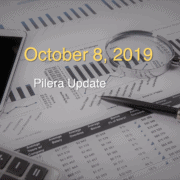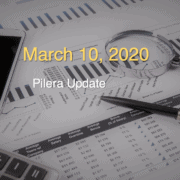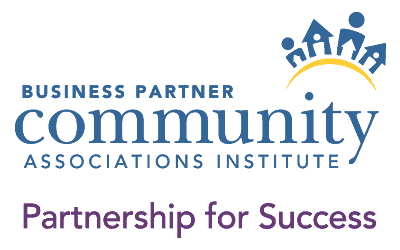7 Best Practices to Better Inform & Engage Your HOA Members
Keeping residents informed is one of the most essential functions of an HOA. As residents become more involved in their community, they expect transparency and up to the minute information from their community leaders. That’s why placing communications at the center of your HOA operations is crucial to a community’s success. Excellent communication fosters a positive community culture and increases resident, board, and manager satisfaction. When HOA communication is done the right way, it also saves managers and board members an incredible amount of time and energy to focus on bigger projects.
In this blog article, you will learn how to:
- Identify topics to cover in your message
- Designate responsibilities
- Use a mix of modern technology and traditional communication methods
- Craft the right message
- Monitor the results of your communication efforts
- Collect feedback from your residents
- Create a communications policy
Identify topics to cover in your message
Before you begin communicating with your community, it’s important to understand your audience. As a board member or a community manager, you’ll need to communicate with owners, tenants, other occupants (who live in the community but aren’t primary owners), tenants, other board members, and community managers. Then, identify the kind of information that is useful to them and will enrich their experience in the community. Consider creating a table like the one below, so you can keep track of the messages you need to send, who needs to receive them, and how often.
| Topic | description | audience | frequency |
|---|---|---|---|
| Maintenance | Inform residents of road closures, water shutoffs, equipment maintenance, etc. | Owners, tenants, other occupants, and board members. | Ad-hoc |
| Emergencies | Inclimate weather, COVID-related emergencies, or any man-made emergencies. | Owners, tenants, other occupants, board members, managers. | Ad-hoc |
| Community policies | CC&R’s, amenity rules, owner responsibilities. | Owners, other occupants, and board members. | Ad-hoc or yearly |
| Community events | Board meetings, virtual hangout events, maintenance alerts | Owners, tenants, other occupants, board members, and managers | Ad-hoc or recurring basis |
| Late dues payments | A reminder to owners on past due payments. | Owners | Ad-hoc |
| New documents posted | Alert residents when an important new document has been posted such as updated CC&R’s or emergency preparedness documents. | Owners, tenants, and other occupants. | Ad-hoc or seasonal |
Designate responsibilities
Assigning responsibilities on who will be communicating with residents ensures that no communication falls through the cracks. Additionally, assigning communication tasks brings consistency to the messages you send. Within the association or management company, it’s often most effective to assign responsibilities by role or expertise. This way, a board or staff member with the most knowledge in a particular area can lend their expertise to the message and make sure it is accurate and consistent. For example, a maintenance manager can send notices about water shutoffs, a board treasurer can send emails about late payments, or the community manager or board president can send a message about emergencies.
Use a mix of modern technology & traditional communication methods
Each person in your community has unique communication needs – a resident with a busy work schedule may prefer a quick text message whereas a resident who owns a flip-phone prefers to get a phone call. Therefore, using a mix of modern HOA communication tools and traditional methods gives you the flexibility to reach every resident. Consider these options to communicate with residents:
Resident Portal
A resident portal is a central place for residents to access all important community information such as documents, events, financial balances, and more. In addition to accessing pertinent information, residents can update their contact information and preferences. Having a self-service portal saves time for board members and managers, as they are fielding fewer phone calls. Through Pilera’s mobile-responsive resident portal, residents can access community information and update their contact information on any device or location.
Website
Having a community website to showcase the community culture, upcoming events, and contact information is another great way to keep current residents connected with the HOA. On a community website, residents can view the latest information, access documents, learn about upcoming events, and make payments. A website also presents the community with an opportunity to attract prospective buyers. Pilera’s HOA website solution is mobile-friendly, customizable, and easy for non-technical staff to maintain. Additionally, website administrators can integrate the website with many of Pilera’s portal features such as documents, events, payments, and more for a seamless resident experience.
Phone, Email or Text Communication
Sending out message blasts through phone, email or text increases the effectiveness of your communication. It also saves the HOA money and time as they no longer have to print and stamp messages only. However, it’s important to note you should treat each method of communication differently. There are instances where one communication method is more effective than another.
Phone Call
When sending out emergency messages, the key is to get the message out instantly. In this case, an automated phone call is more effective and immediate than an email.
Text Message
If you need to send an important but short message, text message can be a great tool to use. According to studies, people read text messages within five minutes of receiving them.
When sending a message that isn’t urgent, such as updates to the community’s CC&R’s, consider sending an email. Pilera’s HOA communication tool enables managers/boards to send mass phone, email, and text messages to hundreds of residents within a few minutes.
Default to the resident’s communication preference when possible
One of the best ways to reach residents is to allow them to choose how they want to hear from you so that they are more likely to receive your message. In Pilera’s resident portal, residents can select email, phone, text, or direct mail as their communication preferences and update their contact information.
Direct Mailers
Direct mail is still a good way to get information across to your residents in 2021. Some residents in your community who are not as technologically savvy may prefer to receive information through the mail instead of email. With direct mail, residents can also read the information at their own convenience whereas their emails may get buried. Direct mailers are a good way to send general information to this audience such as late payment notices, information on upcoming maintenance activities, or invitations to upcoming events.
Flyers
Posting flyers in the common areas can help increase awareness of community information when a resident is walking by. Post flyers such as resident portal access and benefits, maintenance activities, upcoming events, and amenity rules.
Social Media
There’s no shortage of social media platforms to keep your community engaged but it’s best to connect with them where they are most likely to look for information. Twitter, Facebook, and Instagram are some of the most popular platforms to share information. Since these are all public platforms, it’s important to create a policy for what information can be shared and shouldn’t be shared, how to maintain regulatory compliance, how to manage conversations, and who is responsible for monitoring these platforms and interacting with residents. Let’s take a look at how you can leverage each of these platforms:
Twitter is a great platform to post short updates on your community. You can post information such as upcoming events, maintenance activities, new or updated amenities, and more.
Facebook can be used to share important community information and encourage resident engagement. As a popular tool within the platform, board members and managers can use Facebook Groups to help residents connect with one another. When implemented carefully and with constant monitoring by a board member or manager, Facebook Groups can be a useful tool to communicate with residents, encourage discussions, and identify resident sentiment.
Instagram is primarily a social media tool for sharing images and short videos, but when done right, can be a great tool for promoting your community’s culture. Share photos of events, upcoming events, maintenance updates, amenity guidelines, contests, and other updates on what the community is doing.
Craft the right message
Getting your message across in the right way is just as important as how you choose to send a message. Residents are looking for transparency from their community leaders, so it’s important to give them accurate and honest information. Here are some tips to communicate the right way:
- Be concise – Your messages should be short and to the point. Since residents are busy managing school, work, and or family, they won’t have enough time to read long messages.
- Show compassion – It’s important to show empathy whether you are sending an individual message or a community-wide message blast. You can show empathy by recognizing the resident’s concerns, apologizing for the inconvenience, and letting them know you are happy to help them.
- Encourage open dialogue – The key to fostering a positive culture within your community is to encourage residents to communicate back with you. Provide an outlet for residents to respond back to you through email, phone, or social media. On the resident portal and website, make it easy for residents to get in touch with you.
- Segment your audience – It’s important to send the right information to the right people so that you are mindful of their time and provide the most relevant content. Your HOA communication technology solution should provide you with advanced segmentation options. In Pilera’s communications solution, you can create distribution groups and further segment your audience by location and user type.
Monitor the results of your HOA communication efforts
Measuring your current communication efforts will help you to identify elements that are successful or could be improved for the future. Once a month, set aside some time to understand how your current efforts are panning out. Here are some elements to analyze in your communication strategy:
- Email open rates – This metric will help you identify what information residents find the most useful. If your community newsletters are getting high open rates, identify the successful elements such as the type of content or the images you use and repeat the idea in future emails.
- Email or phone unsubscribes – If you are getting a large number of people unsubscribing, it may be an indicator the message isn’t right or there’s too much communication.
- Social media and email interactions – When you analyze social media or email interaction with your residents, it’s important to look out for two things. The first is resident sentiment. How are your residents responding – are they happy, thankful, confused, angry, disappointed? How they respond can help you understand how to communicate better the next time. It can also indicate if you’re on the right track. The second is common responses or questions. If residents are asking common questions, consider posting more information about it on social media. Additionally, you can create a knowledge base with commonly asked questions or send a message about it.
Collect feedback from your residents
Getting feedback from your residents on a regular basis can help you to identify and resolve problems, so you can make the community-living experience more enjoyable. When you ask residents for feedback, they will appreciate that their opinion is valued, leading to increased resident satisfaction. Here’s how to get started with collecting resident feedback:
- Resident satisfaction survey – In every communication you send to residents include a basic resident satisfaction survey asking them what they like about the community’s customer service and what can be improved. In Pilera, you can create a custom email footer that will display at the bottom of every email communication.
- Deep dive surveys – A month or two before budgeting season, consider sending your residents a survey on different aspects of the community and how it can be improved. Ask them about customer service, amenities, work-order services performed, and more so you can come up with goals for the next year.
- Take action on the feedback you receive – It’s important to not only ask for feedback but respond to those insights, even if you can’t fully implement the suggestion. If residents are asking for a new amenity but the budget is too tight, let them know that you hear them and that although it’s not possible right now, you’ll consider it in the future.
Create a HOA communication policy for board members & community managers
Now that you have all the above elements in place, it’s time to create a communication policy that documents it. An HOA communications policy outlines all decisions your community makes about how to communicate, measure efforts, and ask for feedback. Once created, the document should be shared with fellow board members and community managers communicating on behalf of the board members. Additionally, HOA’s should evaluate their communication policy every year based on efforts from the previous year to identify any opportunities for improvements.
Here’s what you should include in your communications policy:
- A table displaying topics to communicate about, description, audience, frequency, who is responsible for communicating, and communication channels.
- Establish some do’s and don’t’s for communicating with residents. Provide examples such as “Be empathetic in your response” or “Don’t be defensive in your response, even if you are correct”.
- Identify the tone you’ll use when communicating so that your message is consistent and professional.
- How you will measure your communication efforts so that you can improve future strategy.
- How often the HOA communication policy will be reviewed internally and who is responsible for maintaining the document.
As many HOA communities look to improve their communications, developing a strategy with these best practices in mind can foster a sense of community and save time for community leaders in the long run. If you’d like to learn more about how Pilera’s HOA software can support your communication strategy, contact us or email us at [email protected].












